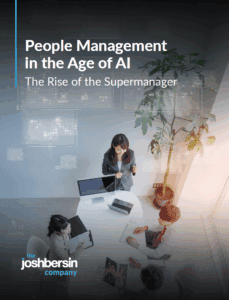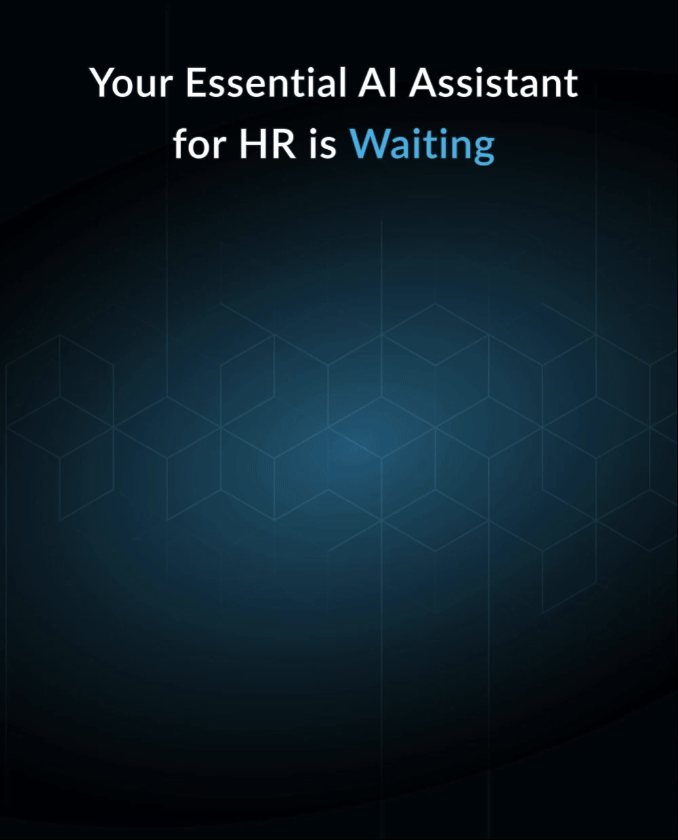The Rise Of The Supermanager
Now that AI is part of our daily life, we see its impact on management. In this article I’d like to explain this important topic, and introduce you to our new research, “The Rise of the Supermanager.”
A Brief History of Management
If you read Peter Drucker and look at decades of research, you find a common theme. Managers “manage” and workers “do work.”
In other words, the reason we appoint people as managers, team leaders, and supervisors is to lead and manage others.
Implicit in this role is the idea that managers set direction, keep people aligned, set priorities, and make sure each individual has the skills and tools to succeed. And when people are misaligned or don’t perform, managers may coach, move, or fire people.
 Most leaders know that this is harder than it looks. Managers have to make difficult decisions: who to hire, who to promote, and how to help a team perform. So ideas like agile management, empowerment, accountability, and goal setting are critical. And there are no shortage of books or models. These include the rough and tumble “Jack Welch” style, the Howard Schultz “servant leadership” approach, the customer-intensive “press release” focus by Jeff Bezos, and the more recent “first principles” approach of Elon Musk.
Most leaders know that this is harder than it looks. Managers have to make difficult decisions: who to hire, who to promote, and how to help a team perform. So ideas like agile management, empowerment, accountability, and goal setting are critical. And there are no shortage of books or models. These include the rough and tumble “Jack Welch” style, the Howard Schultz “servant leadership” approach, the customer-intensive “press release” focus by Jeff Bezos, and the more recent “first principles” approach of Elon Musk.
But now, as AI changes every job and business function, there’s a new dimension to consider. How ready are your managers for experimentation, change, and reinvention of their teams? This new dimension of leadership is upon us, and we believe this heralds “the rise of the Supermanager.”
What’s Really New About AI?
Isn’t AI just one more technology tool to implement?
No, this wave is different. Unlike the productivity systems we’ve had in the past, AI is a tool that learns and personalizes itself to each person. It gives teams and individuals vast new power (just look at the emergence of Digital Twins), and it enables individual teams to gain vast insights into enterprise data.
So AI transformation is an enablement, learning, and reinvention exercise. And line leaders, who often “wait” for innovations from corporate, must help lead this change.
AI Transformation Is Bottoms Up And Top Down
Our research shows that many important AI innovations come from front-facing teams who figure out something new. A client in Japan discovered that their Thai distribution center had hacked-together a photo-based app for inventory management (developing it on their own) that reduced the monthly time for inventory by 75%. They shared their innovation with corporate, who then replicated the app company-wide.
An analyst at IATA (the global airline industry association) used Galileo to build a staffing, skills, and workforce planning model for the airline industry, saving months of effort in airline staff planning. She is taking this self-developed AI model and sharing it with airline leaders around the world.
An individual investment advisor at a leading bank developed a portfolio advisor in the company’s secure AI agent platform. The IT team took this creative work and is using it to build a global portfolio management system for high net worth clients.
And these stories go on and on. Everywhere we look there are opportunities for AI transformation (marketing content generation, job analysis and job searching, data crunching for employee performance, performance appraisal writing) and many of the best ideas come from frontline employees. Supermanagers must enable, encourage, and empower people to bring these ideas forward. (The three E’s of AI transformation.)
 |
Supermanagers Execute and Innovate
What’s unique about Supermanagers (and I’m sure you’ve all worked for people like this) is their magical ability to focus on “results” and “reinvention” in tandem. They do this through a series of capabilities (described in our research), yet they are not “rebels” or “disruptors.”
Today most companies have AI steering committees and technology teams to build standard platforms and handle big ideas. (Standard Chartered, for example, is building a new global onboarding platform to handle complex talent onboarding in 80+ countries.) Yet these corporate groups can’t possibly see every opportunity.
So Supermanagers teach their teams to come up with new ideas, prioritize what’s important, and bring their innovations forward. Rather than waiting for “corporate” to build something new, they support and encourage employees to innovate.
Supermanagers are Critical To AI Transformation
The problem we face is described in the chart below. While tools like Microsoft Copilot are enormously powerful, our ability to “leverage them” takes time. The result is a growing gap between technology (green arrow) and our own business productivity (red arrow).
Supermanagers, in a sense, are the fuel and energy that bend this red line up to fill the gap.
 |
What are the things that hold us back? Well a “traditional manager” may wait for IT to deliver a solution or tell everyone to “figure out how to be more productive.”
That simply is not enough. Supermanagers understand AI (they get their hands on it), they encourage people to experiment, they ask IT for help, and they push their team to think outside the box.
These small, frontline innovations create energy, experience, and demands on IT. The result is a company of many innovations, each pushing the red line up further toward the green. And as new AI features emerge, this Supermanaged team of Superworkers continues to innovate.
This is only possible because AI systems are so easy to program and customize. Anyone can create prompts or manage data in an agent (Galileo is a totally open system with many features for developers), almost as easy to use as a spreadsheet. So a sound Supermanager can lead this charge.
What Should Organizations Do?
 Most companies have a leadership model of some kind. How much does it emphasize execution and results vs. innovation and creation? How free are managers to reassign roles and create new jobs? Do you teach your leaders about job design and organizational change?
Most companies have a leadership model of some kind. How much does it emphasize execution and results vs. innovation and creation? How free are managers to reassign roles and create new jobs? Do you teach your leaders about job design and organizational change?
And how familiar are your leaders with AI itself? They must dig in and learn: there’s no excuse. This revolutionary technology is changing every role in business: strong leaders need to skill up fast. That means you, as an HR leader, need to set an example.
Look at your management model and revisit your reward system. As I discuss in this week’s podcast, the Supermanager focus may be the most important investment you make in AI.
Download the research here, and try Galileo for Managers, the world’s AI agent for leaders at all levels.
Additional Information
Introducing Galileo™ for Managers, The Leadership Guru At Your Fingertips
The Rise of the Supermanager (podcast)
